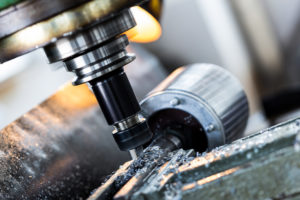 Metal fabrication is a complicated process that requires both experienced labor and high quality machinery. The major benefit of 5 axis machining is the ability to machine couples shapes in a single set-up, subsequently providing greater machining productivity and making the entire task more time efficient.
Metal fabrication is a complicated process that requires both experienced labor and high quality machinery. The major benefit of 5 axis machining is the ability to machine couples shapes in a single set-up, subsequently providing greater machining productivity and making the entire task more time efficient.
In simpler terms, a block of material is manipulated until the unnecessary bits have been removed and the target object is all that’s left. Hopefully this will help you better understand how 5 axis machining is used within the metal fabrication industry.
5 Axis CNC Machining — Computer numerical control (CNC) manufacturing uses a multiaxis machining software system to support the milling away of access material by either water jet cutting or laser cutting. With these precision CNC machining services, the amount of human labor is drastically reduced for each milling task, a more precise surface finish can be obtained, and much more complex parts can be manufactured.
A 5 axis CNC machine simultaneously moves a tool to perform a milling job and remove excess material from an object. However, 3 axis machining only moves a part in two directions while the tool moves up and down. The number of axes for multi axis machines can range from 2 to 9, with 5 being the most common.
The 5 Axes Configurations — A 5 axis machine’s specific configuration determines which rotational ages (of the three) it will utilize during a milling task. A common style of 5 axis machinery operates with an A-axis rotating about the X-axis and a C-axis rotating about the Z-axis. Consequently, a swivel-rotate-style axis machine operates with a B-axis rotating about the Y-axis and a C-axis rotating about the Z-axis.
Getting The Most Out of 5 Axis Machining — Since 5 axis capabilities are often under-utilized across various industries, it’s important to use high quality equipment and take excellent care of its maintenance needs.
“Some may have the machine but not understand it’s full capability, or they may not have the software that’s needed to create a cutting program that would utilize the machine’s full capabilities,” said Mike Finn, Mazak America’s industrial applications engineering manager. “When you’re doing high-speed 5-axis machining, the servo drives on the machine and the response time is very important to avoid shortcutting or overshooting when machining.”
If you want to learn more about how 5 axis machining can help your company, or find some of the best sheet metal fabrication Pennsylvania has to offer, contact York Haven Fabricators today.
